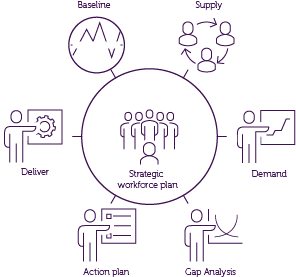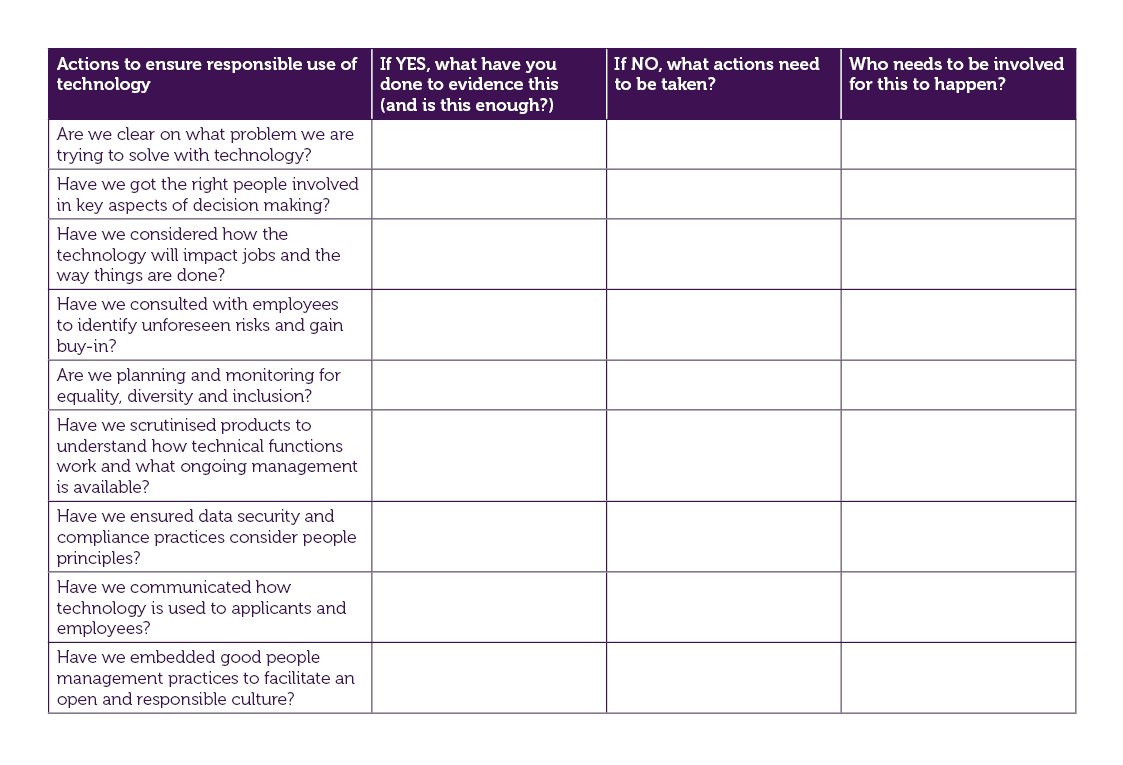Technology is an indispensable tool for people professionals in recruitment and workforce planning. Technologies such as social media, online assessment platforms and chatbots have revolutionised the way organisations source, assess, and engage talent. As these technologies become more sophisticated and entrenched, it is crucial for people professionals to ensure that their use is responsible, ethical, and compliant with relevant regulations.
This guide examines how technology is used across the different stages of recruitment and workforce planning, and introduces you to the benefits and risks of using technology to equip you with new knowledge to advocate for ethical and sustainable practices.
People professionals can use this guide to navigate the complex world of technology-driven recruitment and workforce planning and apply the guiding principles of responsible technology use to create a more inclusive, diverse, and equitable workforce for the future.
Common uses of technology in recruitment and workforce planning
Benefits and risks of using technology in recruitment and workforce planning
Guiding principles
Advances in AI and implications for people professionals
Checklist, further resources and references
CIPD Trust
Tackling barriers to work today whilst creating inclusive workplaces of tomorrow.
Bullying
and harassment
Discover our practice guidance and recommendations to tackle bullying and harassment in the workplace.

Explore the CIPD’s point of view on age diversity in the workplace, including recommendations for employers and actions for the UK Government

This factsheet looks at recruiting overseas workers, the categories of non-UK nationals able to enter and work in the UK, and the legal framework involved.

Explore the CIPD’s point of view on automation, AI and technology, including recommendations for employers

Practical advice on how to use this approach as part of your wider conflict management strategy

Practical guidance to help you identify and implement good atypical working practices


What this practice is, why you should avoid it, and how to approach it if no other options are available




